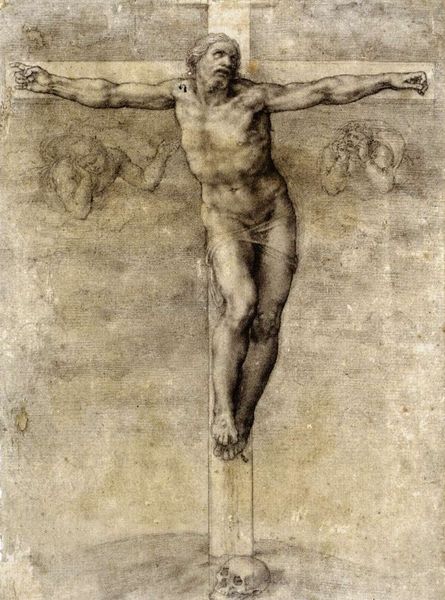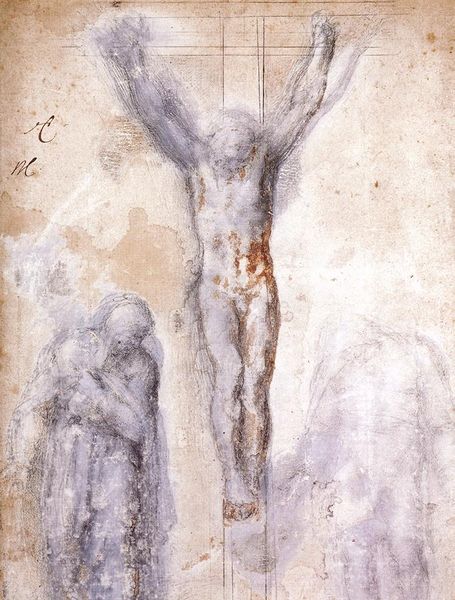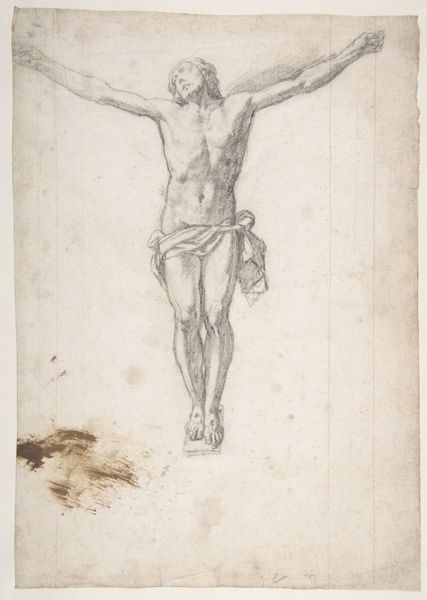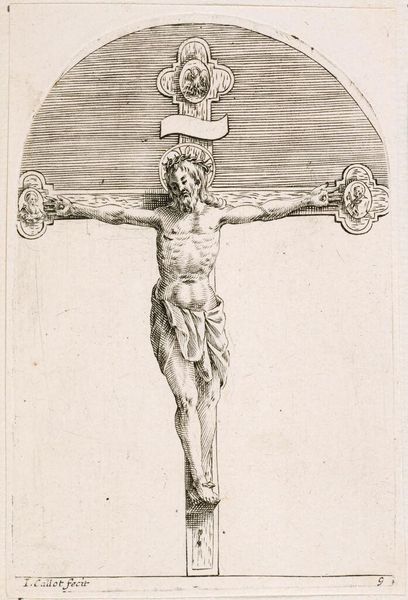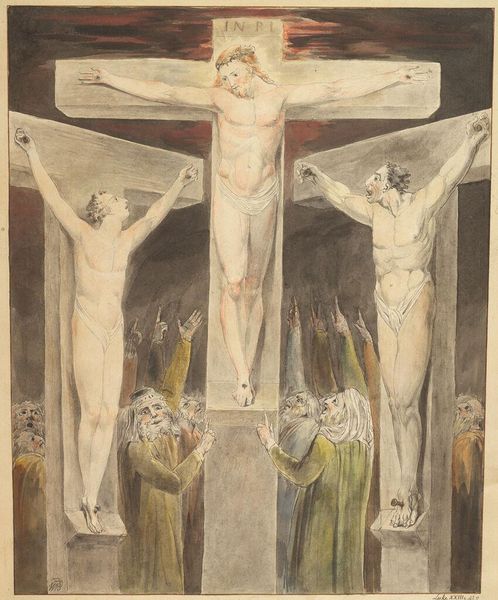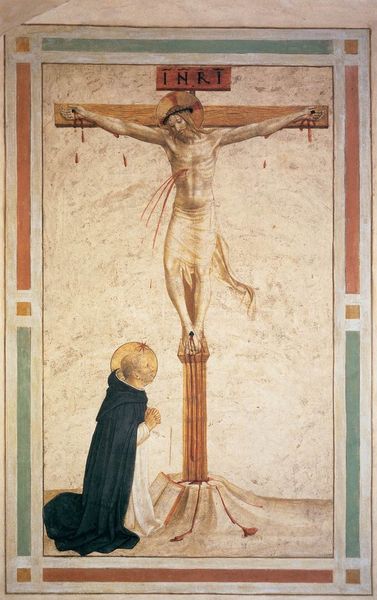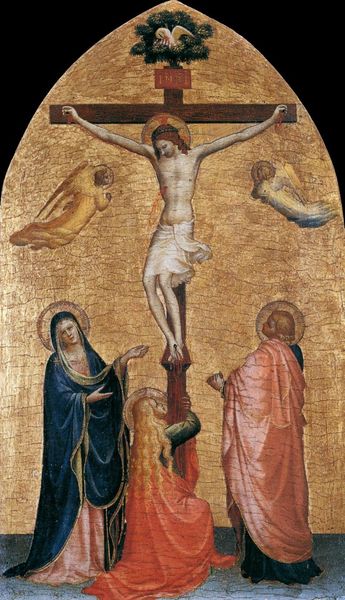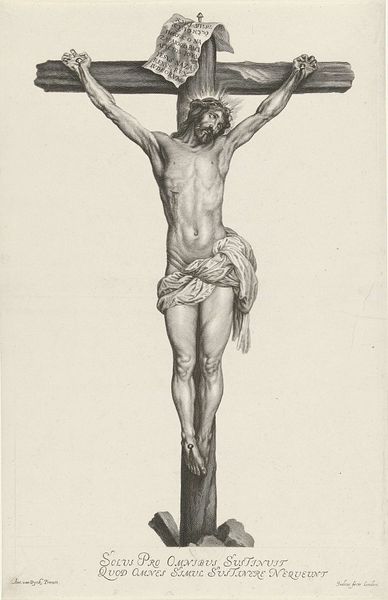
Study of "Christ on the Cross between the Virgin and St. John the Evangelist" 1556
0:00
0:00
drawing, dry-media, charcoal
#
portrait
#
drawing
#
medieval
#
charcoal drawing
#
figuration
#
form
#
11_renaissance
#
dry-media
#
christianity
#
human
#
line
#
crucifixion
#
charcoal
#
history-painting
#
academic-art
#
charcoal
Dimensions: 41.2 x 27.9 cm
Copyright: Public domain
Editor: Here we have Michelangelo's charcoal drawing, *Study of "Christ on the Cross between the Virgin and St. John the Evangelist"* from 1556. The starkness of the medium lends such drama to a powerful scene. How do you interpret the use of charcoal here, especially in conveying the emotional weight? Curator: This work, while seemingly a traditional religious scene, offers a poignant intersection of faith, power, and identity within the context of 16th-century Italy. Michelangelo's use of charcoal, a medium capable of both intense darkness and delicate shading, mirrors the era's turbulent religious climate and the challenges to established dogma. Editor: How so? Curator: Consider the deliberate rendering of Christ’s body: the raw physicality challenges the idealized portrayals often favoured by the Church, nodding to a more human, vulnerable figure. Simultaneously, the Virgin and St. John can be viewed through the lens of gender and power. What does their posture suggest to you? Editor: Well, they appear supportive, almost as if they are bracing themselves for an impact. Curator: Exactly. Are they mourning passively, or actively resisting? Michelangelo’s strategic choices invite us to question the prescribed roles and expectations imposed on these figures within the religious narrative, challenging the power dynamics embedded within societal and religious structures. What do you think? Editor: It is a bit different than I had originally seen it but understanding Michelangelo's drawing in a social context really brings forward important, thought provoking discussions. Curator: It's essential to continually engage with these dialogues, to understand how art acts as a lens through which we can critically examine our past and our present.
Comments
No comments
Be the first to comment and join the conversation on the ultimate creative platform.
